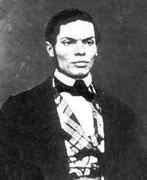Person: Joachimsthal, Ferdinand

Ferdinand Joachimsthal made substantial contributions to the theory of surfaces and applied the theory of determinants to geometry.
Mathematical Profile (Excerpt):
- Ferdinand attended the Gymnasium at Liegnitz (now Legnica, Poland) where he was taught by Eduard Kummer.
- Appointed to the Liegnitz Gymnasium in 1832, Kummer taught Joachimsthal mathematics and physics.
- Under Kummer's guidance, Joachimsthal began undertaking mathematical research while at the school in Liegnitz.
- Steiner had been appointed as an extraordinary professor of geometry two years before Joachimsthal began his studies and he had already made a name for himself as a leading expert on projective geometry.
- Joachimsthal remained at Berlin for three semesters before, taking the route that most students took at that time, he moved on to study at a second university.
- Jacobi had made important contributions to geometry and at the time that Joachimsthal was studying in Königsberg, Jacobi was working on his theory of determinants.
- He made his announcement of the distance to 61 Cygni in the year that Joachimsthal began studying at Königsberg.
- After taking his first degree at Königsberg, Joachimsthal went to Halle to undertake research at the University.
- Now, almost certainly to improve his chances of getting an academic post, Joachimsthal converted from Judaism to the Protestant Christian faith after the award of his doctorate.
- Joachimsthal passed the 'Examen pro facultate docendi' and, from 1844, taught in Berlin at the Konigliche Realschule.
- Joachimsthal also habilitated at the University of Berlin on 13 August 1845, becoming the first Jew to habilitate there.
- At the University of Berlin Joachimsthal taught courses on analytic geometry and calculus, giving more advanced courses on the theory of surfaces, the calculus of variations, statics and analytic mechanics.
- Although teaching in examples classes was new to Berlin, Joachimsthal had realised the benefits of this style of teaching while he was a member of Jacobi's seminar in Königsberg.
- While teaching as a docent at the University of Berlin, Joachimsthal also continued teaching at the Konigliche Realschule and he published the 21-page article Über die Bedingung der Integrabilität Ⓣ(On the condition of integrability) in the Jahresbericht of the Konigliche Realschule of Berlin in 1844.
- He appended a note to the article, dated April 1846, saying that Joseph Raabe had published a similar result in an article in Volume 31 of Crelle's Journal dated September 1844 but Joachimsthal had announced his result in the Jahresbericht of the Konigliche Realschule in April 1844 and so claimed priority.
- Despite his outstanding contributions, Joachimsthal did not climb the academic ladder in the way that one would have expected and, despite frequent pleas from his colleagues who gave him the highest recommendations, he remained a docent at the University of Berlin.
- Joachimsthal did not hold the chair in Halle for long since he was offered the chair of mathematics at Breslau (now Wrocław in Poland) in 1855.
- Kummer, therefore, strongly recommended Joachimsthal, whom he regarded extremely highly, to fill the chair in Breslau.
- The scheme worked, with Joachimsthal ranked first and Weierstrass third, so Joachimsthal became Kummer's successor at Breslau in 1855.
- Jacobi, who was very impressed with Joachimsthal's Cours de géométrie élémentaire, persuaded him to write Elemente der Analytische Geometrie der Ebene Ⓣ(Elements of analytic geometry of the plane) which Jacobi wanted to be part of the book Geometrie des Raumes Ⓣ(Geometry of space) that he was planning to write.
- Joachimsthal wrote Cours de géométrie élémentaire Ⓣ(Course of elementary geometry) but he died before the work could be published and Oswald Hermes (1826-1909), who had been a student of Kummer graduating in 1849, edited Joachimsthal's notes and published them in 1863.
- Notes from a lecture course Joachimsthal gave in Breslau in the winter semester of 1856-57 was published as the book Anwendung der Differential- und Integralrechnung auf die allgemeine Theorie der Flächen und der Linien Doppelter Krümmung Ⓣ(Application of calculus to the general theory of surfaces and lines of double curvature) in 1872.
- Liersemann explains in a Preface how he had attended Joachimsthal's lectures in 1856-57 and, having been asked by Joachimsthal, he took careful notes with the aim of their being the basis for a book.
- Influenced by the work of Jacobi, Dirichlet and Steiner, Joachimsthal wrote on the theory of surfaces where he made substantial contributions, particularly to the problem of normals to conic sections and second degree surfaces.
- Joachimsthal applied the theory of determinants to geometry.
- Joachimsthal introduced a notation that can be used to write down the equations of tangents and polars of plane and projective conics.
Born 9 March 1818, Goldberg, Prussian Silesia (now Złotoryja, Poland). Died 5 April 1861, Breslau, Germany (now Wrocław, Poland).
View full biography at MacTutor
Tags relevant for this person:
Origin Poland
Thank you to the contributors under CC BY-SA 4.0! 

- Github:
-

- non-Github:
- @J-J-O'Connor
- @E-F-Robertson
References
Adapted from other CC BY-SA 4.0 Sources:
- O’Connor, John J; Robertson, Edmund F: MacTutor History of Mathematics Archive
